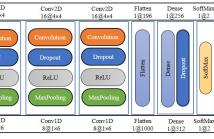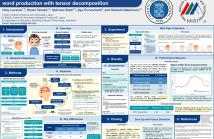
- Read more about TV-DCT: Method to Impute Gene Expression Data Using DCT Based Sparsity and Total Variation Denoising
- Log in to post comments
- Categories:
 10 Views
10 Views
- Read more about Motion Artefact Removal in Functional Near-InfraRed Spectroscopy Signals based on Robust Estimation
- Log in to post comments
Functional Near-InfraRed Spectroscopy (fNIRS) has gained widespread acceptance as a non-invasive neuroimaging modality for monitoring functional brain activities. fNIRS uses light in the near infra-red spectrum (600-900 nm) to penetrate human brain tissues and estimates the oxygenation conditions based on the proportion of light absorbed. In order to get reliable results, artefacts and noise need to be separated from fNIRS physiological signals. This paper focuses on removing motion-related artefacts. A new motion artefact removal algorithm based on robust parameter estimation is proposed.
- Categories:
 12 Views
12 Views
The performance of automatic speech recognition systems(ASR) degrades in the presence of noisy speech. This paper demonstrates that using electroencephalography (EEG) can help automatic speech recognition systems overcome performance loss in the presence of noise. The paper also shows that distillation training of automatic speech recognition systems using EEG features will increase their performance. Finally, we demonstrate the ability to recognize words from EEG with no speech signal on a limited English vocabulary with high accuracy.
- Categories:
 42 Views
42 Views
- Read more about BASELINE WANDER REMOVAL AND ISOELECTRIC CORRECTION IN ELECTROCARDIOGRAMS USING CLUSTERING
- Log in to post comments
- Categories:
 5 Views
5 Views
- Read more about A Subject-to-Subject Transfer Learning Framework based on Jensen-Shannon divergence for Improving Brain-computer Interface
- Log in to post comments
One of the major limitations of current electroencephalogram (EEG)-based brain-computer interfaces (BCIs) is the long calibration time. Due to a high level of noise and non-stationarity inherent in EEG signals, a calibration model trained using the limited number of train data may not yield an accurate BCI model. To address this problem, this paper proposes a novel subject-to-subject transfer learning framework that improves the classification accuracy using limited training data.
- Categories:
 34 Views
34 Views
- Read more about Seizure Detection Using Least EEG Channels by Deep Convolutional Neural Network
- Log in to post comments
This work aims to develop an end-to-end solution for seizure onset detection. We design the SeizNet, a Convolutional Neural Network for seizure detection. To compare SeizNet with traditional machine learning approach, a baseline classifier is implemented using spectrum band power features with Support Vector Machines (BPsvm). We explore the possibility to use the least number of channels for accurate seizure detection by evaluating SeizNet and BPsvm approaches using all channels and two channels settings respectively.
- Categories:
 15 Views
15 Views
- Read more about Short-Segment Heart Sound Classification Using an Ensemble of Deep Convolutional Neural Networks
- Log in to post comments
This paper proposes a framework based on deep convolutional neural networks (CNNs) for automatic heart sound classification using short-segments of individual heart beats. We design a 1D-CNN that directly learns features from raw heart-sound signals, and a 2D-CNN that takes inputs of two-dimensional time-frequency feature maps based on Mel-frequency cepstral coefficients. We further develop a time-frequency CNN ensemble (TF-ECNN) combining the 1D-CNN and 2D-CNN based on score-level fusion of the class probabilities.
- Categories:
 47 Views
47 Views
- Read more about Measuring the Task Induced Oscillatory Brain Activity Using Tensor Decomposition
- Log in to post comments
- Categories:
 9 Views
9 Views
- Read more about SPEECH ARTIFACT REMOVAL FROM EEG RECORDINGS OF SPOKEN WORD PRODUCTION WITH TENSOR DECOMPOSITION
- Log in to post comments
Research about brain activities involving spoken word production is considerably underdeveloped because of the undiscovered characteristics of speech artifacts, which contaminate electroencephalogram (EEG) signals and prevent the inspection of the underlying cognitive processes. To fuel further EEG research with speech production, a method using three-mode tensor decomposition (time x space x frequency) is proposed to perform speech artifact removal. Tensor decomposition enables simultaneous inspection of multiple modes, which suits the multi-way nature of EEG data.
- Categories:
 221 Views
221 Views
In recent years, the successful application of Deep Learning methods to classification problems has had a huge impact in many domains. In biomedical engineering, the problem of gesture recognition based on electromyography is often addressed as an image classification problem using Convolutional Neural Networks. In this paper, we approach
- Categories:
 64 Views
64 Views